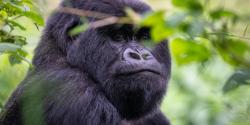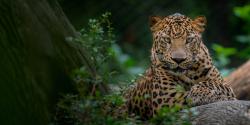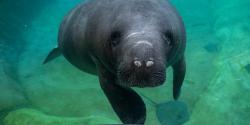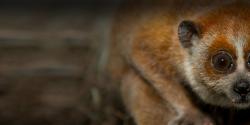Nutrition
Moose are browsers, which means they consume parts of trees and woody plants. They will eat twigs, bark, roots, leaves, and tender shoots of various plants. During the summer months, moose will consume water plants. In the winter, moose will browse on conifers, such as balsam fir, and eat the needle-like leaves. They can eat more than 40 pounds of browse a day and most of the moose’s time is spent eating.
At the Zoo, moose are offered a wide range of browse, a specialized processed herbivore pellet, and a variety of enrichment.
Current Range and Historic Range
Moose are found throughout northern North America. They occur throughout Alaska, Canada, the northeastern United States, and as far south as the Rocky Mountains in Colorado, Utah, and parts of Nevada.
Habitat
Moose inhabit northern, mixed forests, especially near damp, marshy areas. Males tend to select habitats with greater food sources, while females tend to select areas with better cover to stay hidden.
Predators and Threats
Natural predators include brown bears, wolves, and black bears. This is especially true for young or sick moose.
Threats to the moose populations in North America are habitat alterations caused by forestry and agricultural practices. Habitat fragmentation, increased resource competition due to habitat conversion, and climate change all hurt moose populations.
Physical Description and Adaptations
Both the cow and the bull have a fleshy throat appendage called a “dewlap” or “bell”; however, only the bull has antlers. Antlers are cast off each year and grow back, getting larger until they reach maximum size at about the age of seven. They can grow up to about 5 feet wide. Made up of calcium-phosphorous with a soft covering (called velvet), antlers have a blood supply that allows growth. In mid-to-late summer the velvet starts to dry, which means the blood supply to maintain growth has ceased. The antlers become hardened (calcified). The velvet is removed by raking across shrubs and branches in late September to mid-October. Removal of the velvet coincides with the breeding season (rut), so the antlers can be utilized for fighting other males for access to breeding females. Antlers are cast off during the winter and re-growth can be seen within about two weeks. Young males will cast off antlers their first year.
Moose have interesting adaptations that help them survive harsh winters, maneuver in the water, and process vegetation for food. They have large hooves with four toes that flex with pressure, allowing them to walk on top of deep snow and get good footing on different surfaces. Long legs allow moose to reach high browse (leaves, twigs, and buds of woody plants), have a higher vantage point to see approaching predators, run quickly, and jump over obstacles. Moose can run up to 35 miles per hour! The legs and feet also help make moose one of the best swimming land mammals, reaching speeds of six miles per hour. Each hair of a moose's coat is hollow, which helps them stay warm and makes them more buoyant while swimming.
The teeth and mouth of a moose are specialized to process the diverse vegetation they feed on. When a moose eats, the incisors bring twigs into their mouth and then bite them off, then the back teeth are used for chewing and grinding the food. There is an open, flat space between the front and back teeth called a “diastema”. A moose will grab twigs and put them sideways in this spot, and then strip off all the leaves by moving its head back and forth. From here, the vegetation gets chewed by the back teeth and then swallowed for the first time. Moose are ruminants, which means they regurgitate partially broken-down vegetation called “cud” to chew again and extract more nutrients. The rumen is the first chamber that vegetation goes into after leaving the esophagus. After the cud arrives back in the moose’s mouth, the moose chews it thoroughly a second time and swallows it. The long intestinal tract of the moose gives the intestine more surface area for the absorption of nutrients because plants are very poor in nutritional value. Even their elongated head offers an advantage in reaching food sources, allowing the moose to feed high in trees and even underwater. The moose’s nose has flaps that automatically close when submerged.
A moose's sense of smell is phenomenal and, combined with a good sense of hearing, can help detect a potential predator in the thick forested areas where they reside. Their eyesight is not particularly bad, but the position of the eyes on the sides of the head leaves a huge blind spot in front of the moose. Hearing and smelling give the moose more time to run or prepare to for potential danger.
Reproduction
Breeding season begins in early autumn when bulls (adult males) go into rut and challenge each other for breeding opportunities with cows (adult females). Typically, an adult male will travel to mate with several females. In a tundra environment, however, the dominant male will herd and defend a group of females for his breeding. This is called a “harem”. After an average gestation period of 234 days, cows will give birth to one or more calves in late spring or early summer. Moose calves only nurse for about 60 days, with part of their diet being vegetation as early as two to three weeks. By one month old, half of their food intake will be vegetation. Calves will remain with their mothers until she is ready to deliver her next calf. At that time, she may chase the yearlings off and encourage them to move off on their own.
Communication
Moose communicate through a variety of vocalizations, noises, body posturing, and odors.
Behaviors
Bulls are generally solitary and tend to keep separate unless it is breeding season or resources are focused in one area. Social units are usually a female and her offspring.












